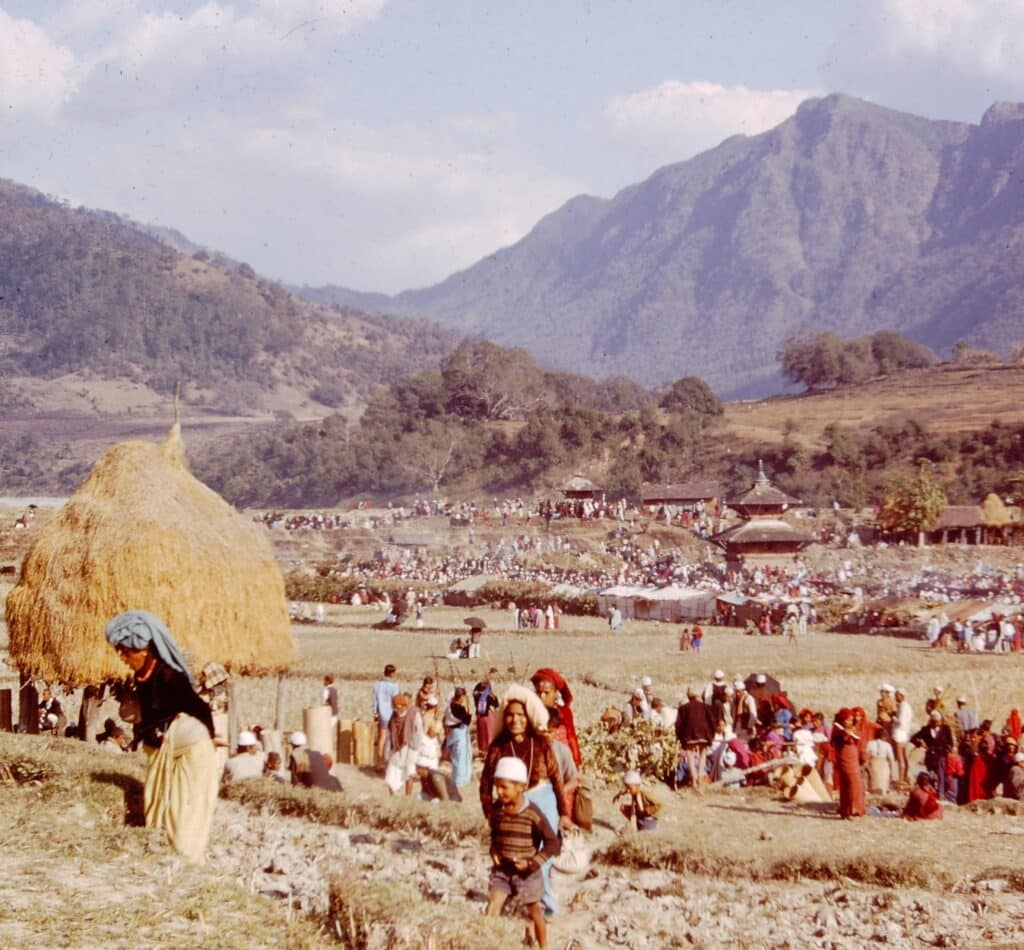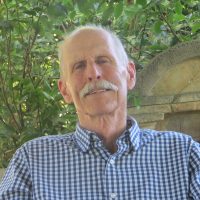I took a photograph almost 60 years ago of a young girl in the small farming village of Ghachok in the west central hills of Nepal. She was a daughter of Ghachok’s primary school headmaster and I saw her from time to time when she was tending to her family’s two cows and a goat or collecting firewood. The locals called her Bahini (younger sister) so I called her Bahini, too. Ghachok was also the home of my Peace Corps counterpart, Dil Nath Sharma, who was the Kaski District Training Officer.
After two months, I moved from Ghachok to my assigned post in the district capital of Pokhara where Dil Nath had a small office in the district headquarters building. During the remainder of my Peace Corps service, I periodically returned to Ghachok to spend time with Dil Nath, his family and others who were now friends.

After finishing my Peace Corps service, I continued working overseas in different countries in various administrative capacities. In between jobs and later in retirement, I returned to Nepal more than a dozen times to renew friendships, see more of the country, and trek in the mountains.
In 1993, I went back to Nepal and stayed a week in Ghachok. When I visited Bahini’s parents, I learned that she had married, moved to Pokhara, and had a daughter and a son of her own. As it turned out, Bahini’s daughter was in Ghachok visiting Bahini’s parents that very day and I asked to accompany her back to Pokhara to greet Bahini.
Visiting Bahini
During our four-hour walk to Pokhara the next morning, the daughter and I passed stunning views of the snow-capped Himalayas. Upon reaching the Pokhara bazaar, we climbed a steep hill to Bahini’s thatched-roof house near the top. And there she was, standing shoeless in the earthen courtyard in a simple sari, looking older than I had expected, staring at me in wide-eyed disbelief. I did not recognize her but she knew immediately who I was.
“Suresh Chandra,” she called out. Sun and Moon. It was the name her father had given me in 1966. “Pheri aunu bhaeko chha!” You have come back! I was as thrilled to see her as she was to see me.
She invited me into the kitchen and poured me a cup of sweet milk tea as we chatted. At one point she started breathing heavily, apparently struck by how this exotic foreigner out of her childhood past was seated on the earthen floor of her kitchen drinking tea and talking with her in Nepali.
When her son came home from his high school classes and her husband had returned from his job in the bazaar, Bahini served the three of us rice and lentils. (Women traditionally waited for the males to finish eating before serving themselves.) Sitting cross-legged on thin straw mats on the floor, we ate with our fingers. I felt honored to be sharing a meal in the kitchen of a Brahmin family, a courtesy normally not extended even to members of the next highest Hindu caste let alone to a non-Hindu outsider like me.
Bazaar lights sparkle
After dinner, Bahini’s husband and I sat on the outdoor porch while Bahini and several of her friends treated us to an hour or more of wonderfully graceful dancing to a tape recording of music intoxicatingly familiar to me. In the background, lights from the bazaar below sparkled in the darkness. When Bahini’s friends left, we all retired to the bedroom of their two-room house. The husband and I slept on narrow, straw-matted wooden beds while Bahini and the two children slept on straw mats on the floor.
After a morning breakfast of fried eggs and tea and effusive thank you’s and goodbyes, I walked with Bahini’s daughter down to a shop in the bazaar where I left a roll of film containing the photos I had taken as a keepsake for Bahini and her family.
That’s all. Nothing more. From all the time I have spent in Nepal over a period of almost 60 years, I have chosen to recall this casual visit with Bahini and her family to evoke the simple pleasures of my life in Nepal. But more than that, it speaks to how the routine daily interaction of Peace Corps volunteers with the people they live and work with contributes not only to friendships but to good relations between host countries and the United States. I think the words of Dr. Abraham Vergese, a physician and author of “Cutting for Stone”, spoken in his 2025 Harvard commencement address, go to the heart of what the Peace Corps has been all about: “As a child growing up in Ethiopia, without television until my teens, my notion of America came from the many extraordinary Americans who served in the Peace Corps.Those individuals left an impression of a country that was decent, generous, and compassionate, not just to its own citizens but to other nations.” In a parallel vein, a Peace Corps colleague once said to me, “These people (Nepalis) have a lot to teach us.” We all learn from each other and grow together.
The author worked for the U.S. Agency for International Development in wartime South Vietnam and later for the United Nations on economic development projects, emergency and drought relief, and security and peace-keeping missions.






